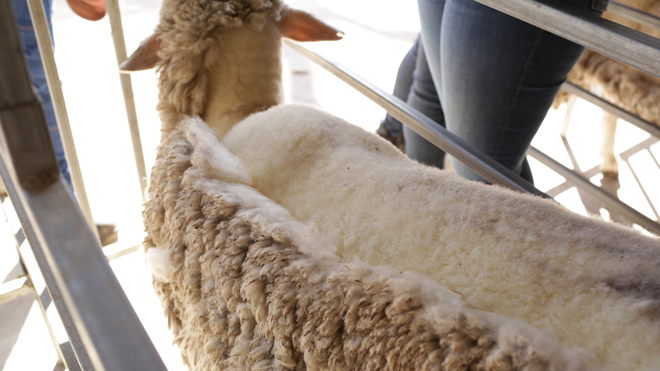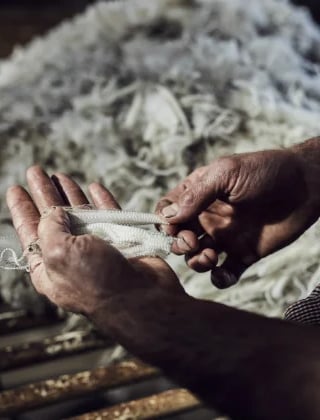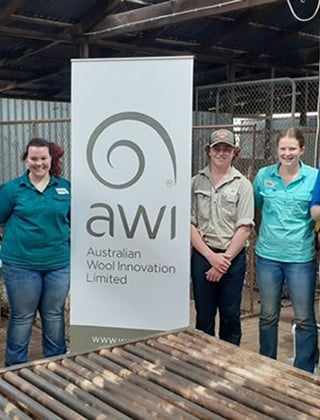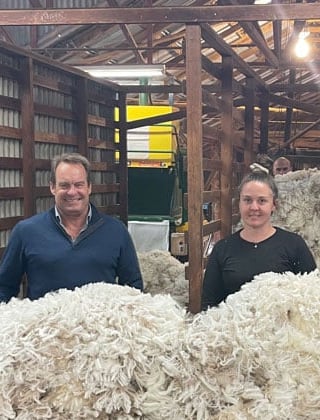Welcome to Australian Wool Innovation, a hub for the woolgrowers of Australia.
Not a woolgrower? Looking for information about wool products, wool care or wool processing?
The Woolmark Company is the global authority on wool. Visit Woolmark.com instead.
Biological wool harvesting update

The AWI project to develop a new opportunity for the biological harvesting of wool is progressing well, with numerous proposals submitted to AWI for ways to remove the wool above the weakened zone.
As previously reported, AWI is funding promising research by the University of Adelaide into a new opportunity for biological harvesting of wool that generates a weakened zone at the base of the wool fibre but, importantly, enables the fleece to remain on the sheep without a net until the wool can be mechanically removed.
“I am pleased to inform woolgrowers that the scientific work with the University of Adelaide to develop a biological agent that creates the weakened zone is progressing well with more testing currently underway,” said AWI CEO, John Roberts.
The next phase of AWI’s biological wool harvesting project is the funding of proposals to develop manual/semi/fully automated technology to harvest the weakened wool, ie a device that applies a force to separate the wool from the body of the sheep. This could be in the form of a handpiece for manual wool removal through to a more comprehensive automated system.
AWI issued a Request for Proposals (RFP) world-wide in October for the purpose of obtaining responses from engineering companies, universities, entrepreneurs, start-ups and other organisations. Fourteen proposals for funding were submitted and AWI is progressing with four proposals for the development of the wool removal system.
“We are grateful that there has been considerable interest in the challenge to develop a cost-effective system to remove the wool,” John said.
“This is a project woolgrowers are very interested in and we have received many offers from growers to volunteer their flocks for testing purposes.”
Biological wool harvesting is an example of the multi-pronged approach that AWI is taking to make wool harvesting easier and more cost-effective for woolgrowers and the industry.
More information: www.wool.com/wool-harvesting-innovation
This article appeared in the March 2024 edition of AWI’s Beyond the Bale magazine. Reproduction of the article is encouraged.















